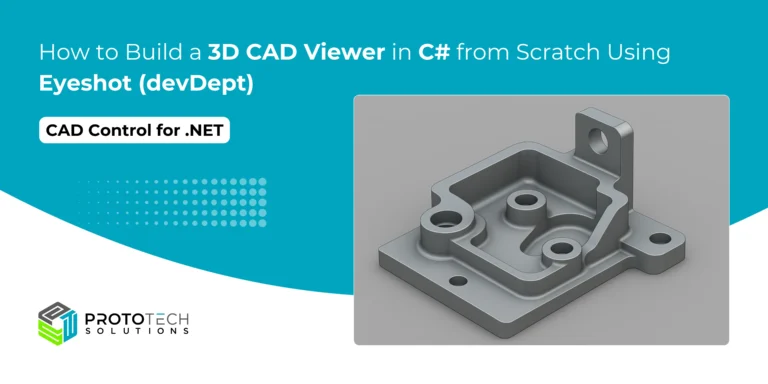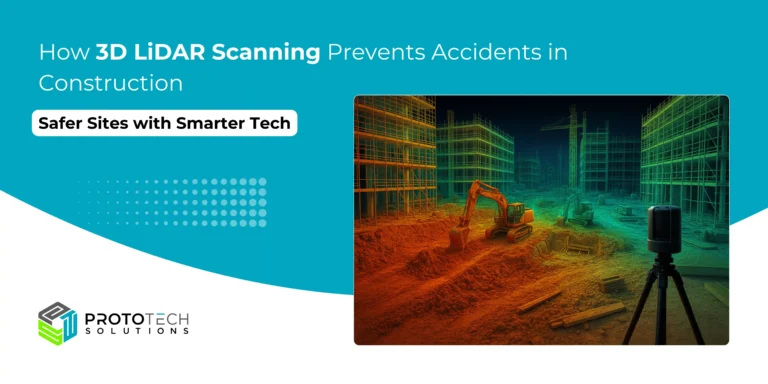The Future of Sales in Construction: How Scan to BIM is Changing the Game

Global Construction Industry Futures
The construction industry is experiencing rapid growth driven by urbanization, technological advancements, and sustainability initiatives. Over the next decade, the global construction market is projected to expand significantly, with its size increasing from $9.7 trillion in 2022 to $13.9 trillion by 2037. This growth is fueled by key markets such as China, the United States, and India, alongside emerging economies like Vietnam, Indonesia, and Malaysia.
Key trends shaping this growth include:
- Technological Innovations: The adoption of tools like Building Information Modeling (BIM), robotics, and 3D printing is revolutionizing efficiency and reducing costs.
- Sustainability Focus: Green building practices and modular construction are becoming mainstream as the industry aligns with environmental goals.
- Infrastructure Investments: Government-backed megaprojects and smart city initiatives drive demand for large-scale construction.
- Regional Dynamics: India is forecasted to be the fastest-growing market globally, while Eastern Europe anticipates a surge due to post-conflict reconstruction efforts.
This dynamic landscape positions the construction sector as a critical driver of global economic development.
The construction industry is undergoing a significant transformation, and at the forefront of this change is the innovative technology known as Scan to BIM (Building Information Modeling). This process utilizes 3D laser scanning to create highly accurate digital models of existing structures, fundamentally altering how construction projects are planned, executed, and managed.
Construction sales are seeing a big change thanks to Scan to BIM technology. This tech combines advanced scanning tools with building information modeling (BIM). It’s changing how projects are shown and sold.
Now, clients want detailed, data-driven proposals. Companies using this tech are ahead. They turn site data into strong sales plans. But how exactly is Scan to BIM reshaping construction sales? Let’s explore its impact and future potential.
What is Scan To BIM?
Scan to BIM is a process that converts laser-scanned data from physical structures into accurate 3D digital models. The process begins with a laser scanner capturing millions of data points from a physical site. These scans are then processed into a cohesive point cloud, which can be transformed into a comprehensive BIM model using specialized software.
These models provide detailed insights into existing conditions, allowing for better planning, design, and project execution. Traditionally used by architects and engineers, Scan to BIM is now becoming an invaluable tool for sales teams as well.
The Evolution of Digital Tools in Construction
- 1980s: 2D blueprints were the main project documents.
- 2000s: Early BIM software started but didn’t use real-world data well.
- Today: Scan to BIM combines point cloud technology with BIM, making design-to-construction workflows smooth.
Traditional Construction Sales Challenges

In the fast-paced construction industry, sales teams face many challenges. Traditional sales methods often can’t meet today’s high standards. This leads to delays, unhappy clients, and lost chances.
- Inaccurate construction estimates make projects cost more than expected, causing budget issues.
- Construction client communication problems happen because of 2D drawings. Clients get confused about the layout.
- Construction proposal challenges cause delays because of slow manual drafting.
These problems are widespread. Over 60% of firms face rework due to bad communication, surveys show. Sales teams spend a lot of time fixing proposals after clients say no. Clients want clear costs and timelines from the start, but traditional methods can’t deliver.
How Scan to BIM is Transforming Construction Sales

Scan to BIM is changing the game in construction sales transformation. It’s moving away from static blueprints. Now, sales teams use 3D models and real data to make visual construction proposals that grab clients’ attention.
Transforming Client Presentations and Proposals
- Interactive client presentations now show projects in 3D. Clients can rotate, zoom, and explore designs.
- Scan to BIM data makes sure visual construction proposals match site realities. This reduces misunderstandings.
- Teams share immersive visuals via platforms like Revit or Navisworks. This makes complex details easy for everyone to see.
Creating Compelling Visual Sales Materials
Scan to BIM lets sales teams create visual construction proposals that bring ideas to life. Clients can see how proposed changes affect existing structures in real time. For example, a contractor in Texas used 3D scans to rebuild a historic theater.
They showed clients how renovations would keep architectural details while adding modern touches.
Enhancing Transparency in the Sales Process
A transparent sales process starts with Scan to BIM’s accuracy. Clients can review proposals knowing they’re based on real measurements and site conditions. This builds trust.
Scan to BIM facilitates better communication among architects, engineers, contractors, and clients by providing a shared digital model that everyone can access and contribute to. This level of transparency ensures that all parties are on the same page, reducing misunderstandings and enhancing teamwork. For sales teams, showcasing this collaborative aspect can be a powerful differentiator when competing for new business.
Key Benefits of Scan to BIM for Construction Sales Teams

Scan to BIM changes how sales teams work. It turns raw data into useful tools. This leads to cost savings, faster work, and more trust with clients. As a result, sales teams win more bids and face fewer risks. Firms using Scan to BIM see 60% fewer disputes over pricing errors.
- Increased Accuracy and Reduced Estimation Errors
Millimeter-precise scans make construction estimation accuracy better. They turn site conditions into digital data. This helps avoid overestimating materials or underpricing labor. One Midwest contractor saved $150k a year by fixing overbid mistakes.
- Faster Proposal Development and Response Times
Automated data export saves hours on manual work. Teams can make proposal development speed faster. They can respond to RFPs in 48 hours, not 5-7 days. This means they can work on more projects and close more deals.
- Enhanced Client Visualization and Understanding
Interactive 3D models and augmented reality demos are part of client visualization tools. They let clients see projects before they start. This cuts down on back-and-forth questions by 40% in early adopters.
- Improved Change Management During Sales Processes
Construction change management gets easier with real-time data sharing. Teams can answer scope questions right away. This reduces last-minute changes.
| Benefit | Impact |
| Error Reduction | 60% fewer cost overruns |
| Time Savings | 20+ hours saved per proposal |
| Client Engagement | 30% faster decision cycles |
Learn more: Top 6 Scan to BIM Success Stories Globally
Future Trends: AI, AR, and Mobile Integration with Scan to BIM

New construction technology trends are taking Scan to BIM to new heights. Picture walking through a virtual building model during a client pitch. This is now possible with augmented reality in construction. Companies like Trimble and Autodesk are at the forefront, combining BIM data with AR to show designs on real sites in real time.
Artificial intelligence BIM is making data processing faster. AI algorithms can analyze scan data quicker than humans, cutting model creation time by up to 40%. This change lets sales teams work on strategy, not just manual tasks.
Mobile construction technology is the final piece. Field reps use tablets to make changes to models right away, answering client needs on-site. Mobile apps allow teams to update models in real time, turning smartphones into sales tools.
- AI-driven BIM models cut drafting time by 35% (per Procore 2023 case studies)
- AR adoption grew 62% in construction sales teams since 2022
- 85% of top firms now require mobile BIM access for field staff
These innovations are not just ideas, they’re changing bids and contracts today. As these technologies improve, early adopters will have a big advantage. The future is not just digital, it’s immersive, instant, and unstoppable.
Conclusion
Construction digital transformation is changing the game for construction sales. Scan to BIM technology lets teams make accurate visual proposals. This cuts down on errors and speeds up talking to clients.
Companies using these tools get a leg up in the construction game. They make workflows smoother and build trust with clients. Early adopters are already seeing the benefits of BIM scans, turning data into clear plans.
If you have any questions about the topics above, don’t hesitate to connect with our BIM experts. Whether you’re curious about Scan to BIM technology or need assistance with BIM projects, ProtoTech Solutions is here to help. We specialize in delivering advanced Scan to BIM services using cutting-edge tools like Revit, AutoCAD, Archicad, Autodesk 3ds Max, Rhinoceros 3D, and more.
Our team is committed to providing accurate and efficient technical solutions tailored to your needs. Imagine transforming complex construction challenges into streamlined workflows with the latest technology at your fingertips. ProtoTech Solutions ensures precision, collaboration, and sustainability in every project we undertake.






